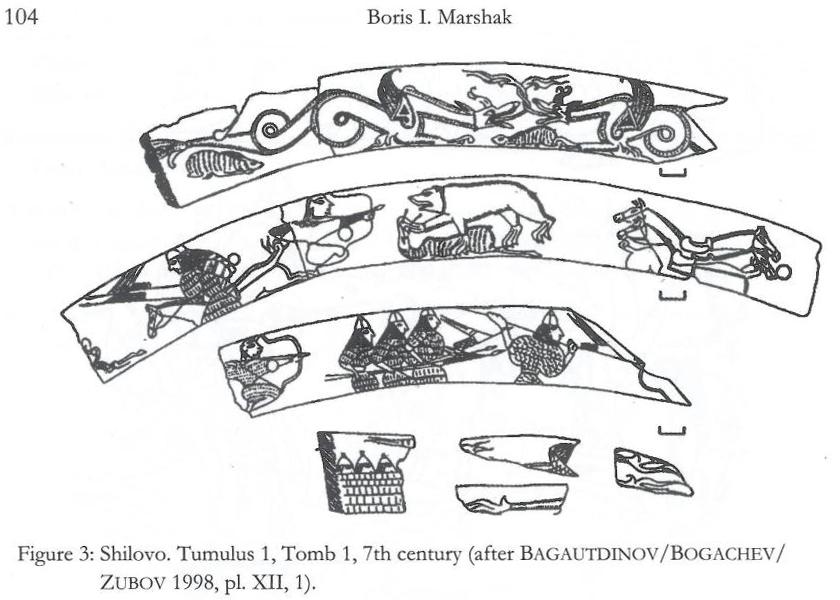
Try Amazon Fresh
Sogdian Soldiers on Bone Plaques from the Shilovo Cemetery, Central Asia, 7th Century



However, the phalanx attacking the archers on a bone plaque from the Shilovo Cemetery (7th century) seems rather realistic (BAGAUTDINOV/ZUBOV 1998, 253-256; BAGAUTDINOV/BOGACHEV/ZUBOV 1998, pl. XII, 1). The unarmoured archers are in the kneeling position which was the most stable position for shooting (Fig. 3). Another bone plaque from this cemetery of the nomads of the Volga basin also depicts a fortress very similar to the representations of Sogdian military architecture. A phalanx of dismounted heavy horsemen was typical of Tibet in the 8th century (BECKWITH 1993, 110). In Sogdian paintings we often see single warriors fighting on foot after falling from their horses.
Source: p.99, “Sogdian Tactics as Mirrored in the Panjikant Murals” by Boris I. Marshak, (St. Petersburg)